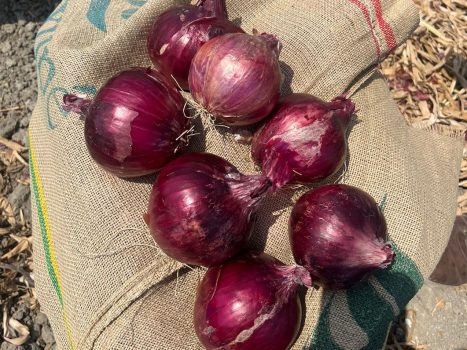
Our friend Stu Follen with SL Follen Company in Portland shared his insights this week on West Coast onion exports shipped by ocean vessel. Stu covered a lot of territory; Canada and Mexico are not part of the report.
In his onion export report, crop year 2021, Stu said, “West Coast onion exports to offshore markets were very weak this past season. Despite very poor crops in Japan and Korea, U.S. onions could not ‘fill’ the strong demand from these countries. Seasonal shipments to Panama and Central America were also difficult, despite strong demand.
“There were three main reasons for this, which are outlined below:
The 30,000-ft. view – Crop year 2021
- Cost of raw product
With raw product costs at double-digit values, U.S. onion producers had little reason to seek out export markets as domestic sales for existing production were very strong and close to home.
- Quality of onions
The overall quality of western onions was not very good this past year. Record high summer heat created internal quality issues in many onion lots, making it extremely risky to ship this product offshore.
- Supply chain issues
Export container availability was limited and erratic this past season as ocean vessel arrivals and departures were totally random. It was impossible to plan shipments with any sense of certainty that the cargoes would indeed ship.
Cost of transportation rose substantially for both truck and ocean container. Ocean rates essentially were 2x normal rates of the last three or four years.
Conclusion:
Overall a very poor export year for U.S. onions.
“Supply Chain Issues: How it changes our markets (import instead of export)
With higher transport fees, difficulty finding trucks, and higher farm gate prices for onions, the door opened this past year for European onions to be imported to the East Coast of the U.S. during the fall months. All water vessel transport costs were cheaper than a truck from Western U.S. to NY or Boston or Savannah. European onion prices were also cheaper than western U.S. onions. As a result, onions from Europe entered the U.S. market during the height of the U.S. shipping season. This was highly unusual but shows what can happen when the supply chain changes.
“On Closer inspection: Where are the onion export markets going?
Onions are the most internationally “traded” vegetable in the world. Onions routinely ship from one continent to the other to fill supply shortages and seasonal production gaps. This situation will not change. However, in the last 20 years, we have seen a big change in the international trade of onions.
- China: Exports Growing
China continues to increase its international onion markets and is now the main supplier of export onions to Japan, Hong Kong, and SE Asia. Today they grow the same or similar varieties as Pacific Northwest producers. They have a big advantage in shipping transit time to Asian countries as well as cheaper shipping costs.
- Holland: Exports Stable
Always a big exporter to Africa and SE Asia, Holland is aggressively looking to new countries to buy their onions.
- New Zealand: Shrinking/Stable
Historically exports a majority of their onion crop. European markets have been their main volume customer for many years. However, with better storage facilities, European buyers are buying fewer New Zealand onions each year. Due to their Southern Hemisphere growing season, NZ has the advantage of having ‘fresh’ product when North Hemisphere production wanes. This has allowed them to dominate the SE Asia market from March-June, and they will likely continue to do so.
- USA: Shrinking/Stable
U.S. onion exports (excluding Mexica/Canada) have been shrinking over the last 20 years. Japan volumes have shrunk a lot over the last 20 years but have seem to stabilize and the ‘low levels’ is the new normal.’ Taiwan has been mostly stable buyer but this year saw Taiwan switch a good portion of their imports to European onions due to cost.
Korea- could become a bigger customer in the future if duties on US produce continue to fall as planned.
Overall, the US export market has found its new normal, and demand overseas will be greatly impacted by crop production conditions by import countries. Poor overseas production will increase demand for U.S. onions while good overseas production will limit demand for U.S. onions.
Example:
- January 2022 onion imports into Japan.
China: 19,000 MT -à Dominating Japan Import market
Holland: 861 MT–à New to Japan market
USA: 805 MT-à very low historical volume
Export Concerns:
- After a long period of U.S. dollar stability against foreign currencies, the USD has become very strong against many of our export partner countries. This strength will lessen the competitiveness of all U.S. export goods and create additional market share issues if the U.S. dollar values remain historically strong.
Conclusion:
While the downward trend of U.S. onion exports seems to have stabilized over the last few years, its overall role in the U.S. market has greatly diminished from its historical influence of years past. The production of onions in China is probably the main reason for U.S. shrinking market share.”


